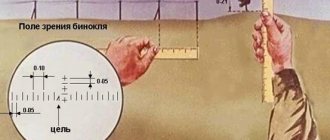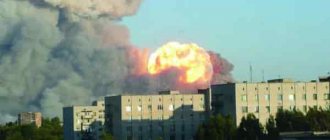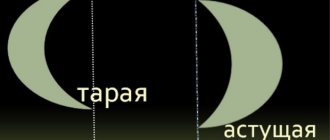The fear of getting lost in an unfamiliar city, especially when traveling to another country and not knowing the local language, is common to many. Therefore, anyone who has at least once experienced a feeling of helplessness when finding themselves in an unfamiliar city simply must master urban navigation.
Perhaps the lucky ones with a “bump of direction” and experienced pathfinders do not need this science, but mere mortals are nowhere without it. Fortunately, there are many ways to navigate a foreign city that turn a frantic search for the right direction into a fascinating test of attentiveness.
Ask for directions on your mobile phone first
To determine the right direction, you can use a paper map of the city, purchased at a souvenir shop, Rospechat kiosk, at the bus station, etc.
But this method of orientation is less popular than special mobile applications (especially since restaurants, gas stations and other equally important points are not displayed on the maps).
Modern guides designed for travel enthusiasts are installed on the gadget and do not require any special skills from the user.
List of mobile applications
By developing and improving modern technologies, specialists have developed mobile programs that simplify navigation in the city. Among the best:
- "Sitorsguat" (helps you find the nearest toilet). It is not surprising that during a long walk through an unfamiliar city, a tourist wants to go “to relieve himself.” As a rule, searching for a toilet, especially if it is prolonged, causes a whole range of negative emotions. To save your nerves and find the nearest toilet as quickly as possible, use “Sitorsguat”. The full potential of the application is revealed in big cities, but the developers are constantly working to improve Sitorsguat.
- “Aroundme” (shows the location of useful establishments). This program will help you find the nearest cafe, service station, pharmacy, etc. It operates in several languages.
- “XE Currency” (will make it easier to find a currency exchanger). Tracks up to 10 types of currencies and calculates the value using a converter.
- “Wi-Fi Finder” (will find free access to the Internet). It will also indicate the shortest route to your destination.
- “Doctoralia” (will help you find a doctor outside the Russian Federation). The global platform operates in 21 countries. Provides data: the doctor’s qualifications, his place of work, contact information.
- “iTranslate” (will help you communicate with the local population in their language) The simplest translator “speaks” more than 70 languages and contains dictionaries. "iTranslate" translates speech into text message and vice versa.
- "Maps.me" (a fast, free application with wide functionality). Does not depend on the Internet. By downloading a map of your destination country in advance, you won't regret it. Features of “Maps.me”: determining the shortest distances to a destination and location without GPS, quick search for a metro station, bank, canteen, etc.
- “OpenStreetMap” (an open street map that helps determine distances between cities, roads, etc.). The application is developed based on a free geographical map of the world and is open for users to mark.
There are many useful applications aimed at finding your way around an unfamiliar country. In order not to depend on the Internet, download them to your mobile phone before your trip and quietly enjoy the sights.
Note! Some programs weigh a lot and “eat up” the charge too quickly. In order not to be left without a “pocket guide” at the most inopportune moment, take a Power Bank with you.
How not to get lost in an unfamiliar city
To the tips on organizing travel published earlier, I would like to add one more, which can help those who travel without organized guides to navigate correctly in an unfamiliar city.
To do this, while still in the Wi-Fi zone of your hotel, you need to open Google Map and the system will indicate your location, which you need to remember by placing a “pin” in this place. All! — you can safely open the door and leave the hotel. Now you will never get lost in an unfamiliar city and will always find your hotel.
The blue pulsating dot shows our current location on the ground. And the “pin” is the place where our hotel is.
This is especially valuable for such chaotic Indian cities as Delhi, Mumbai or Varanasi. After all, none of the budget hotels there will give you either a map or other descriptions of the city. And you will never understand street names in Indian either!
Ok maps map , the application adds the displayed map area of approximately 50x50 km to the cache and you can navigate by it, even without Internet access!
Google Map will work in Off Line mode via GPS! True, this is if you have Apple devices - iPad or iPhohe. I can't say anything about other brands.
When you go outside and open the Google Maps downloaded at the hotel (on your iPhone/iPad), a pulsating blue dot will appear at your location - you are now “here”! This point will move after you, showing on the map the correctness of your route to the selected attraction.
In this picture there is a pulsating blue dot - our location (and this dot moves right before our eyes with us), and a red “comma” is the landmark that we want to reach.
In addition, Google maps will help you find out where a particular place of interest is located, what comments there are about it, and how to get to it. And thanks to GPS navigation with voice prompts, the situation will be even easier.
As you know, on Google Maps you can find detailed information about millions of places around the world in any of the 200 countries where this service is available. You can always find out what awaits you along the way - for example, see reports about accidents and traffic jams. You can also quickly find routes designed specifically for public transport passengers, cyclists or pedestrians, as well as places to eat, museums and other attractions in the location you are exploring.
All this requires iOS 6.0 or later software. Please note that all saved maps only remain on your device for 30 days.
Now a small clarification: not all Apple mobile devices are equipped with GPS modules. They are present in iPhone phones starting with the 3G model (only the first generation iPhone does not have it). iPod Touch players do not have a GPS module and can only find a location when connected to Wi-Fi. The situation with iPad tablets is as follows: there are models with a 3G module (they are also called Cellular in the name), and there are only devices with Wi-Fi function. You can recognize them by name or appearance.
I don’t know how Russian Apple users will fare in connection with some statements about abandoning this service. Android will also be in question, since it also stores everything in the “cloud”. And what’s interesting is that Microsoft devices are the same!
And then what will be left for an ordinary Russian tourist to navigate through unfamiliar places?
Working only for a very narrow circle of Glonass users?
House Numbering Schemes
You need to know the types of settlements and how they are planned. In a metropolis, and even if you have a navigator, it is impossible to get lost.
If it’s night outside and your cell phone is low, you can’t do without the skills of navigating the location of houses. To accurately navigate the city, you need to study its layout and the numbering order of houses.
There are two house numbering schemes:
- Moscow (widespread). Even house numbers are located on the right side of the road, odd numbers are on the left.
- Leningradskaya (rarely used). Even numbering on the left, odd numbering on the right.
Layouts:
- Radial-ring. Numbering starts from the city center and goes to its outskirts (on ring faces clockwise or counterclockwise).
- Radial. The streets, like rays, converge at one point and abut the building.
- Radial. The streets converge towards the city center.
- Rectangular (found in US metropolitan areas).
- Combined (often used in small cities). Combines all of the above structures. The result: traffic jams, chaotically located streets and alleys in which inexperienced tourists get lost.
Let's look at some features:
- In small villages located on both sides of the railway track, the numbering of houses starts from the station square (often, but not always).
- Settlements located along highways (where houses are located along the highway), numbering is carried out in the direction of increasing the number of kilometers. On streets located perpendicular to the road - in both directions from it.
- The numbering of houses in small towns may begin in one direction and continue on the other side in the opposite direction.
- Houses located on embankments are numbered according to the direction of the current. For perpendicular streets, the numbering starts from the river.
Rural-type settlements occupy relatively small areas, accommodate fewer residents, and differ in the type of buildings and the nature of the development.
The features of the local topography, the presence of underground springs, ravines, etc. are of decisive importance in planning. In this regard, the types of rural settlements are classified into several types.
- Plains - common in the central zone of the Russian Federation. They occupy long distances, are not very densely built up, and have a proper layout. Monotonous dead ends and alleys make it difficult to navigate, especially at dusk.
- Mountain - buildings are almost pressed against one another (cornice stepped structure). There are no quarters.
- Coastal - located on the seashore, along a lake or large river. Usually the settlement is stretched along the entire line of the reservoir so that the main streets are parallel to the shoreline, and the driveways are perpendicular. In flooded areas, houses are located at a safe distance (the streets follow the contours of the shore).
The list can be continued indefinitely, and each type has its own characteristics. Therefore, when developing a travel route, take into account the nature of the settlement through which you will go. This will ensure confident and error-free navigation at any time of the day.
Clue! It’s not difficult to find your way around a foreign city if you understand where its center is. From there, by taxi, public transport or on foot, you can get to any point.
Dream Interpretation - City, square
A city in a dream is something alienated that the soul has left temporarily or forever and is watching from the side; your own body / arena of life, alienated from the sleeping consciousness, a world without a soul. An unfamiliar city, deserted, abandoned by residents - the image in which the soul of a deeply sleeping person perceives its own body. A familiar city with empty streets and houses - burdened by strangers, desire they are evil. An unfamiliar abandoned city is being destroyed, dying - the world of your daytime consciousness is experiencing losses, blows; get ready for renewal. An unfamiliar city without people, but filled with different creatures - the revival in a dream of the strength of your body / your thoughts about the posthumous disintegration of the body, in general something disintegrating in you. In an unfamiliar and empty city to meet the only person - to be in the world of your past, alienated from the soul, from which you are expelled for life / rush into it secretly from yourself. In a strange city, suddenly finding yourself in a dream and not being very surprised by this is a turn in life that will bring anxiety. A very beautiful city with a lot of monuments of art to see - the world is yours alienated and viewed from the side of high or base desires. Walking through a Gothic, medieval city with narrow streets is a way to know your base desires, to see them from the outside. To see a Muslim or Indian city with a lot of fancy buildings is to contemplate the world of your imagination. Chinese or Japanese buildings on to see the streets of the city - a symbol of the world of work, profit, monetary relations. To see a strange city with a mass of galleries, basements and factories, where something is boiling, foaming, pouring, or a city entirely of factories and factories - the image of your body alienated in deep sleep and physiological processes in it. Seeing city slums and a landfill, wandering through them is a garbage dump of your body. An unusually wide city square in a dream - gossip about you / your soul feels abandoned in your body / the world of the future awaiting you. A city without earth and sky, with colossal buildings, with houses without windows and doors - the world of your thoughts, contemplating it from the side. A narrow alley, street - failure, ill will, envy, trouble from sensual pleasures. A wide city street - there are many opportunities before you. Finding yourself in a dead end - unpromising work or path. City boulevards - always symbolize in a dream the world of past feelings and relationships. To see noisy city crowds around - fun, joy / to be imbued with the bustle of life / to live thoughtlessly in a dream. A noisy night city with lights - the life of the spirit barely breaks through the vanity of your thoughts. A city rising from the sea or emerging from the air - your thirst for mystery, the world of your curiosity. Seeing a city with a mass of people sleeping everywhere or corpses lying around - a sharp turn in your destiny awaits. A city with people instantly frozen in various poses - thoughts and feelings , which excited you during the day. A city of absolutely fantastic buildings is an image of a worldview that is alien or foreign to you. A city of monkeys or other animals is a world of passions, you are in their captivity.
Sides of the horizon and buildings
In any populated area you may find objects that indicate the cardinal directions no worse than a compass. Standout buildings, structures, monuments, fire towers, parks are the best landmarks for a lost tourist (at night, their silhouettes will help you find the right direction).
Paying attention to the northern side of the old building, you can see overgrown moss and lichen (if there is a drainage pipe nearby, the moss will be adjacent to the mold).
In urban conditions, as in forest conditions, tree fungus grows on the north side of the tree trunk.
The tree mushroom grows, as in the forest, on the north side of the tree trunk.
Paint fades faster on the sunny side of a building.
If the city is located close to a large body of water, the walls facing the shore will be more worn out.
The facades of Buddhist monasteries, yurts and pagodas face south.
The side faces of the Egyptian pyramids and most ancient monuments and palaces were built strictly along the horizon lines.
This is interesting ! In Batumi, due to frequent rains coming from the Black Sea, the western walls of many buildings are covered with sheet iron. In Novorossiysk, the northeastern walls are protected.
Orientation in rural areas is carried out by noticeable buildings: a mill, a silo, a cross of a local church, etc. (ordinary houses are so similar that they are not suitable for this purpose). The silhouettes of large structures stand out even at night and are visible from a great distance.
From the beginning of autumn to the end of spring, storage facilities for vegetables (hills) were installed on elevated areas of rural outskirts protected from winter winds. They are located from north to south or from northeast to southwest (an important fact for a lost traveler).
Important detail! Windows in rural huts are cut down mainly on the south side.
Phrases, how to ask and how to explain directions in English
This is the skeleton of the phrase, the basis from which we will build. We string together vocabulary from the lists above onto these phrases. You can now, before we get to the dialogues, try to compose several phrases yourself based on these templates.
How can I get to... - How can I get to... Is there any... - Is there any... Could you tell me... - Could you tell me... Could you explain... - Could you explain... I am looking for ... - I'm looking... What is the best way to... - What is the shortest way... - What is the shortest way... Is it possible to... - Is it possible... How to... - How...
We talk about the direction of movement
Pointing with your hands is the most universal way. Works in all countries in all languages. But this is not a reason not to learn navigation phrases in English.
Go straight ahead - Go straight Go across - Go across Turn left - Turn left Turn right - Turn Keep moving until - Continue walking until... Stop -
Read also
Halloween traditions (video)
Orientation by religious buildings
For orientation in an unfamiliar locality, a temple (Orthodox church), synagogue, church, etc. is ideal. This is not without meaning, because religious buildings are erected on the sides of the horizon:
- the chapel of the Lutheran and Christian Church faces east, the bell tower faces west;
- many practice orientation along the cross (with an upper horizontal and lower inclined crossbar) installed on the dome of the Orthodox Church. The lowered edge of the lower crossbar indicates the southern direction, the raised edge indicates the northern direction;
- the altar of the Orthodox church is in the east, the Catholic church is in the west (however, there are exceptions to the location of the altar);
- the entrance to the synagogue and mosque is directed closer to the north, the entrance doors of the Orthodox Church are located to the west;
- the facades of Buddhist monasteries and pagodas face south.










